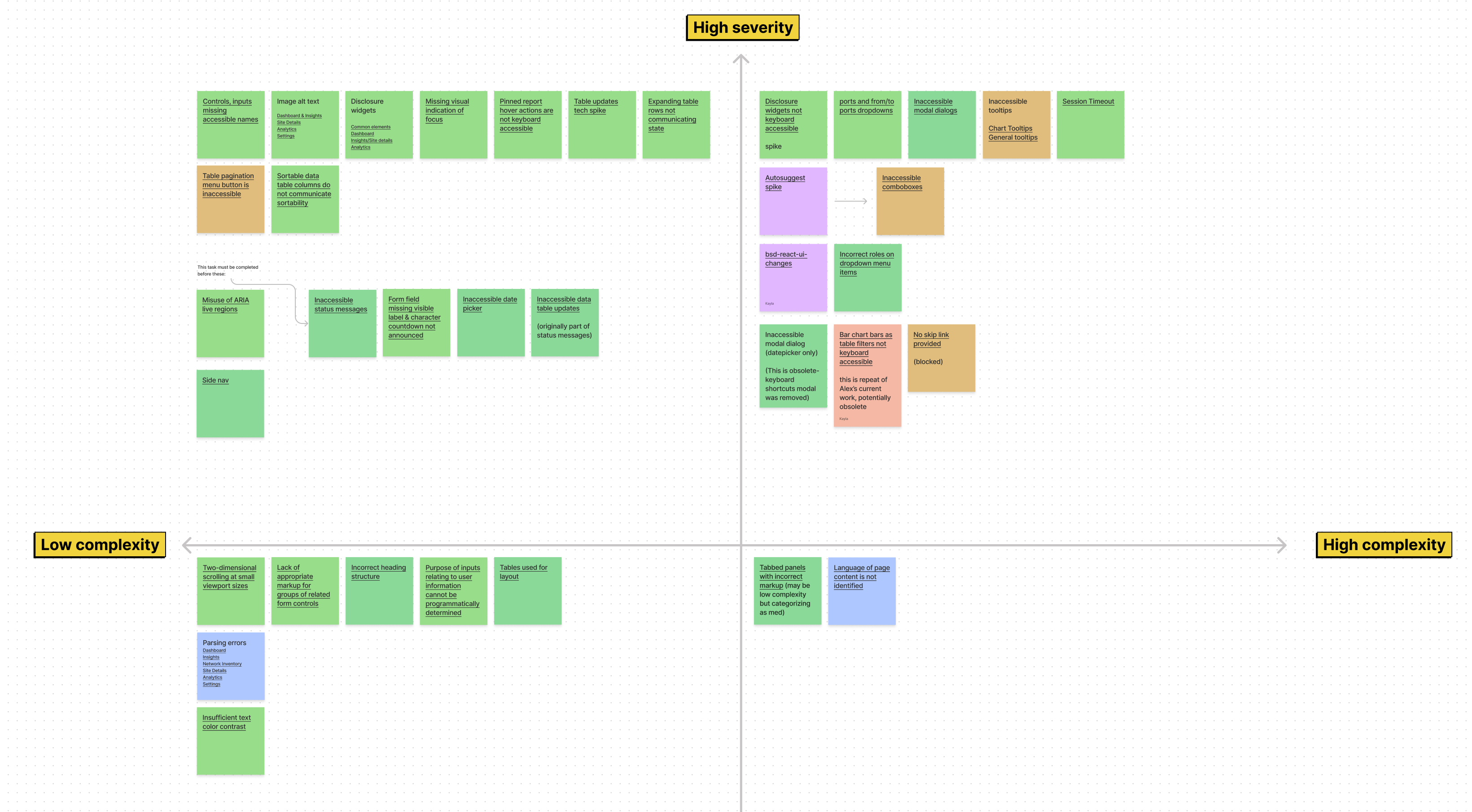Development
Comcast Business Audit Remediation
One of the first initiatives I took on upon starting at Comcast was managing the remediation of a Section 508 audit that had been conducted for multiple applications. I was given a spreadsheet of found issues with possible techniques for remediation. Since the original audit had been conducted, some of the apps had already been rewritten without any accessibility considerations, which meant I needed to re-audit the updated applications.
My process began with assessing the audit documentation, then reviewing and testing all issues to ensure they were still relevant issues. From there, I needed to prioritize those issues by severity and complexity to determine which issues would be the most straightforward to solve, and those which would need more time and planning to address.
In this initial planning phase, I used prioritization matrixes to categorize the issues by complexity and severity. This gave me a much easier way to not only track progress, but to aid in helping collaborators & stakeholders to understand the level of effort both at a high level and more granularly based on individual issues.
Each issue was then turned into at least one task for the dev teams to review and work. Usually, a singular issue would entail multiple tasks depending on how pervasive the issue was in the codebase or how complex it would be to solve. Some of these issues involved cross-team collaboration, such as working with UX to make a piece of UI more accessible, or sometimes coordinating changes with other dev teams who owned separate components of the applications.
Besides providing concrete technical details on how to fix and test, I wrote extensive documentation for the entire development organization on how to setup and test using screen readers, how to conduct an accessibility audit, how to build accessibility into data visualizations with React + D3, and a checklist of common accessibility culprits in web apps and how to address. This part of the process also included knowledge sharing sessions to demonstrate how to use the documentation and recommended tools to successfully build accessible applications.

An example audit prioritization matrix, categorizing issues from highest to least severe, and lowest to highest complexity level.